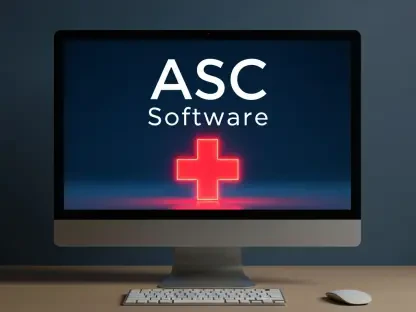Setting the Stage: A Healthcare SaaS Powerhouse Emerges
In the fast-evolving world of healthcare Software-as-a-Service (SaaS), a standout performance by Forian Inc. (NASDAFORA) has turned heads, with the company reporting a staggering 56% year-over-year revenue spike to $7.48 million in its latest quarterly results released on August 8. This remarkable growth, coupled with a shift to profitability, signals a potential game-changer in an industry driven by data analytics and real-world evidence (RWE). But as competition intensifies and market saturation looms, can Forian sustain this momentum? This analysis dives into the heart of Forian’s recent achievements, dissecting market trends, financial data, and strategic moves to uncover what lies ahead for this rising player.
The importance of understanding Forian’s trajectory extends beyond a single company’s success. It reflects the broader dynamics of the healthcare SaaS sector, where innovation in AI, virtual care, and integrated solutions is reshaping how providers, payers, and pharmaceutical firms operate. With larger rivals dominating the landscape, Forian’s ability to carve out a niche offers valuable insights for stakeholders navigating this complex market. The following sections aim to provide a comprehensive examination of current patterns and future projections.
This analysis is crafted to guide investors, businesses, and industry observers through the intricacies of Forian’s position. By exploring key financial milestones, strategic differentiators, and competitive pressures, it seeks to illuminate the opportunities and risks that define the healthcare SaaS space today. Let’s delve into the numbers and trends shaping this critical juncture.
Diving Deep: Market Trends, Data Insights, and Projections
Financial Triumphs: Decoding Forian’s Revenue and Profit Surge
Forian’s latest quarterly earnings reveal a financial turnaround that few anticipated, with revenue soaring 56% year-over-year to $7.48 million, driven by organic expansion and strategic acquisitions. Even more striking is the 638% increase in adjusted EBITDA to $0.59 million, alongside a pivot from a $2.55 million net loss last year to a net income of $0.22 million. These figures highlight a disciplined approach to cost management and operational efficiency, positioning the company near breakeven in its core activities. However, the broad full-year guidance—ranging from a $1 million loss to a $1 million gain—suggests uncertainty in maintaining this pace.
Beyond the headline numbers, financial pressures linger on the horizon. With $6.8 million in convertible notes maturing in September, the potential need for capital raises or dilution risks could impact investor confidence. Despite these concerns, the trajectory indicates a company gaining ground, with projected revenue growth of 39–49% for the year. This performance sets a benchmark for smaller SaaS players aiming to scale amidst fiscal constraints.
The implications of these results resonate across the sector. Forian’s ability to achieve profitability, even if modest, underscores a viable path for mid-tier firms to challenge larger incumbents through agility and focus. Market watchers will be keen to see if this financial stability translates into long-term resilience or if external pressures derail progress.
Strategic Data Edge: Acquisitions Fueling Market Positioning
Central to Forian’s growth narrative is its strategic emphasis on data as a competitive advantage, particularly through the recent acquisition of Kyber, a platform specializing in medical and pharmacy claims data. This move has added $1.7 million to revenue and enhanced capabilities in delivering insights into patient journeys and payer trends, aligning with the industry’s increasing reliance on RWE for drug development. A partnership with Databricks, leveraging cloud analytics, further strengthens Forian’s ability to process complex datasets efficiently.
Yet, challenges in integrating Kyber persist, with unproven profitability and costs that could strain resources. The reliance on one-year contracts introduces revenue volatility, raising questions about the feasibility of securing longer-term agreements or expanding into high-margin areas like specialty pharmacy analytics. If successful, these efforts could solidify Forian’s standing as a data-driven innovator in a crowded field.
Looking ahead, the focus on data differentiation offers a glimpse into Forian’s potential over the next few years. Projections suggest that by 2027, SaaS providers prioritizing recurring revenue models will dominate, a trend Forian must embrace to mitigate current vulnerabilities. Strategic partnerships, rather than aggressive acquisitions, may provide a sustainable path to amplify market presence without overextending financially.
Industry Dynamics: Navigating Healthcare SaaS Transformation
The healthcare SaaS market is undergoing rapid transformation, propelled by innovations such as AI integration, virtual care expansion, and bundled analytics solutions. AI’s role in automating tasks like revenue cycle management presents opportunities for companies like Forian to streamline workflows for healthcare providers. Simultaneously, the push for RWE in regulatory compliance and drug development dovetails with Forian’s data capabilities, positioning it favorably amid these shifts.
Economic and regulatory factors add layers of complexity to this landscape. Potential updates to privacy laws, such as HIPAA, could disrupt data collection practices but also create openings for compliant innovators. Smaller players like Forian, with a modest $35.6 million cash balance, must navigate these changes carefully, as larger competitors like Epic and Cerner pour resources into similar technologies. Diversification into financial services analytics—serving investors and insurers—offers Forian a unique angle less pursued by traditional healthcare SaaS firms.
Future projections indicate a market increasingly favoring integrated solutions over standalone tools. Forian’s ability to bundle Kyber’s offerings with existing services could prove critical in capturing market share. Industry analysts anticipate that over the next two years, adaptability to virtual care demands and AI-driven efficiencies will separate leaders from laggards, a challenge Forian appears poised to tackle if execution remains sharp.
Competitive ArenStanding Out Amid Market Saturation
Competition in healthcare SaaS is fierce, with established giants like Epic and Cerner alongside specialized firms such as Aetion and ConcertAI heavily investing in AI and RWE platforms. Forian’s relatively small scale and cash reserves limit its ability to match the aggressive expansion of these rivals. However, Kyber’s unique claims data provides a potential edge, enabling insights that larger players may not replicate easily.
A key differentiator lies in Forian’s dual focus on healthcare and financial services analytics. By catering to non-traditional clients like investors seeking market insights, the company taps into a niche that could drive growth without direct confrontation with dominant competitors. Still, misconceptions about its capacity to compete at scale often overshadow these strengths, requiring a clear narrative to shift perceptions.
Looking forward, strategic alliances could be Forian’s ticket to enhanced visibility. Rather than pursuing costly mergers, partnerships with tech providers or complementary SaaS firms might offer cost-effective ways to broaden reach. The competitive landscape is expected to intensify through 2027, with consolidation likely to reshape dynamics—Forian’s ability to position itself as a valuable partner or acquisition target will be pivotal.
Reflecting on the Journey: Key Takeaways and Strategic Paths Forward
Looking back, Forian Inc.’s performance in the second quarter painted a picture of remarkable progress, with a 56% revenue increase and a shift to profitability marking a turning point for the company. The strategic acquisition of Kyber and alignment with healthcare SaaS trends like RWE and AI integration highlighted a forward-thinking approach, even as competitive pressures and financial uncertainties cast shadows over the path ahead. The analysis of market dynamics revealed a sector ripe with opportunity but fraught with challenges for smaller players striving to stand out.
For stakeholders, the next steps involve closely monitoring Forian’s integration efforts with Kyber and its push for longer-term contracts to stabilize revenue streams. Businesses in the SaaS space could draw inspiration by prioritizing data as a core asset and seeking untapped niches to avoid clashing with industry giants. Investors, meanwhile, are advised to approach Forian as a high-risk, high-reward opportunity, balancing its growth potential against looming debt obligations and market volatility.
Beyond individual strategies, the broader implication is a call to adapt to an evolving landscape. Companies and investors alike need to stay attuned to regulatory shifts and technological advancements, particularly in AI and virtual care, to anticipate disruptions or seize emerging opportunities. Forian’s journey offers a blueprint for navigating these complexities, emphasizing agility and innovation as cornerstones for success in the ever-changing healthcare SaaS arena.









